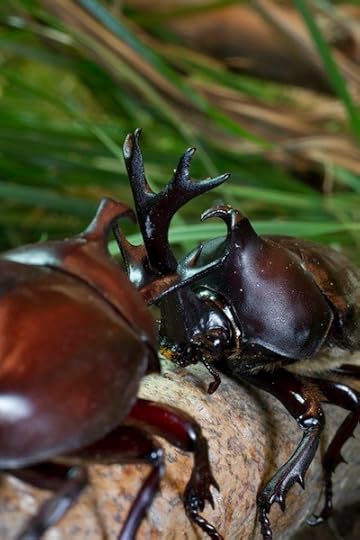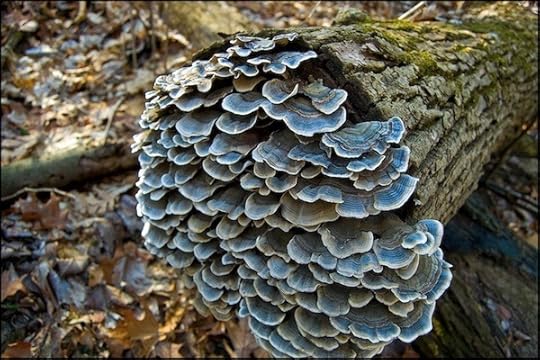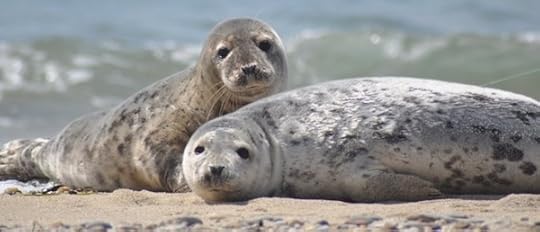Carl Zimmer's Blog, page 40
August 16, 2012
Want to Get 70 Billion Copies of Your Book In Print? Print It In DNA
 I have been meaning to read a book coming out soon called Regenesis: How Synthetic Biology Will Reinvent Nature and Ourselves. It’s written by Harvard biologist George Church and science writer Ed Regis. Church is doing stunning work on a number of fronts, from creating synthetic microbes to sequencing human genomes, so I definitely am interested in what he has to say. I don’t know how many other people will be, so I have no idea how well the book will do. But in a tour de force of biochemical publishing, he has created 70 billion copies. Instead of paper and ink, or pdf’s and pixels, he’s used DNA.
I have been meaning to read a book coming out soon called Regenesis: How Synthetic Biology Will Reinvent Nature and Ourselves. It’s written by Harvard biologist George Church and science writer Ed Regis. Church is doing stunning work on a number of fronts, from creating synthetic microbes to sequencing human genomes, so I definitely am interested in what he has to say. I don’t know how many other people will be, so I have no idea how well the book will do. But in a tour de force of biochemical publishing, he has created 70 billion copies. Instead of paper and ink, or pdf’s and pixels, he’s used DNA.
Much as pdf’s are built on a digital system of 1s and 0s, DNA is a string of nucleotides, which can be one of four different types. Church and his colleagues turned his whole book–including illustrations–into a 5.27 MB file–which they then translated into a sequence of DNA. They stored the DNA on a chip and then sequenced it to read the text. The book is broken up into little chunks of DNA, each of which ...

August 14, 2012
A Good Housekeeping Seal of Approval for science? My new piece in Slate
 Like a number of other science writers, I’ve become increasingly interested (and concerned) about science’s ability to correct itself. (See my recent pieces about arsenic life, de-discovery, and dysfunctional science.) So I was intrigued by a new project launching today to encourage scientists to embrace the spirit of replication. I write about it at Slate. Check it out.
Like a number of other science writers, I’ve become increasingly interested (and concerned) about science’s ability to correct itself. (See my recent pieces about arsenic life, de-discovery, and dysfunctional science.) So I was intrigued by a new project launching today to encourage scientists to embrace the spirit of replication. I write about it at Slate. Check it out.

August 10, 2012
What Lurks In Logs
The world, it bears reminding, is far more complicated than what we can see. We take a walk in the woods and stop by a rotting log. It is decorated with mushrooms, and we faintly recall that fungus breaks down trees after they die. That’s true as far as it goes. But the truth goes much further. These days scientists do not have to rely on their eyes alone to observe the fungus on a log. They can drill into the wood, put the sawdust in a plastic bag, go to a lab, and fish the DNA out of the wood. A group of scientists did just this in Sweden recently, sequencing DNA from 38 logs in total. They published their results this week in the journal Molecular Ecology. In a single log, they found up to 398 species of fungi. Only a few species of fungi were living in all 38 logs; many species were limited to just one.
Consider that on your next walk in the woods. The one or two types of mushrooms you see on a log are an extroverted minority. The log is also filled ...

August 5, 2012
Nature’s Swirl [Science Tattoo Emporium]
I don’t know if you are still collecting these, but I wanted to send you a pic of my recent tattoo of a Von Karman vortex street. This is a (reasonably) faithful representation of an image from an actual experiment to produce this phenomenon, from the book An Album of Fluid Motion (hope they don’t sue me!).
I’ve always thought it was a beautiful pattern, and I’m fascinated with how it appears in such diverse contexts in a large range of space and time scales. I work in molecular simulation of fluids, so I don’t quite study Von Karman vortices, but this kind of fluid dynamics is at least tangentially related to my field.
Click here to order a copy of Science Ink: Tattoos of the Science Obsessed.
Click here to view the Science Tattoo Emporium.

August 1, 2012
Writing about Science and the Environment: My Fall 2012 Class
If you or someone you know is a student at Yale, check out the class I’m teaching this fall. It’s called Writing about Science and the Environment (cross-listed as EVST 215 and ENGL 459). You can find out about it on the Yale Online Course Information site, where I’ve just posted the syllabus.

July 31, 2012
Nature’s Latest Flu Experiment: My Story in Today’s New York Times On A New Virus In Seals
Last September, harbor seal pups in Massachusetts and New Hampshire started to die in droves. In today’s New York Times, I write about what killed them: a new influenza strain that evolved from shorebirds to seals, possibly as recently as last summer. While controversy swirls around scientists experimentally nudging flu viruses across the evolutionary between birds and mammals, Nature has been doing some experiments of its own. Check it out.
PS–The paper is in press at mBio. I’ll post a direct link when there is one, which should be this morning. Update: Here’s the paper.
[Photo of harbor seals in Nantucket by U. S. Fish and Wildlife Service - Northeast Region]
July 27, 2012
A Hot Planet and a Twisted Gut: Catching Up With Download the Universe

Over at Download the Universe, we’re continuing to explore the growing world of science ebooks. Here’s the latest batch of reviews:
Going to Extremes: An Ebook About the Climate Forest and the Weather Trees Dan Fagin writes about what our weird weather these days can tell us about our warming future.
An overstuffed colon and a perfectly sized Kindle Single Seth Mnookin on Andy Borowitz’s very funny take on a horrendous bowel disorder. (Really!)
eBooks and the democratization of crackpottery John Timmer muses on the digital future of self-published pseudoscience.
Rudy Rucker Resurrects a Lost Classic of Psychedelia Steve Silberman writes an impassioned review about a forgotten tale of mind-altering drugs, now rescued from obscurity as an ebook.
Telegraphing What Technology Wants John Hawks takes a look at a digital retooling of a science book and wonders if ebooks will become the new Cliff Notes.
A Journey to the Island of Tree Kangaroos Matthew Power enjoys a good old-fashioned tale of jungles, exploration, and weird marsupials.
Can the wonders of the universe fit on an iPad? Jennifer Ouellette Jaime Green reviews an app by physicist-celebrity Brian Cox.
The Frankenstein Universe: How The New York Public Library Blew Up the Ebook I review an enormous ...
July 26, 2012
Why You Can’t Fake A Good Horn
 Next month, my first co-authored book is coming out. Evolution: Making Sense of Life is a textbook for biology majors, and my co-author is Doug Emlen, a professor at the University of Montana. I’ve heard many tales of disastrous collaborations between scientists and science writers, and so I don’t enter into them lightly. But working with Emlen has been a delight. No matter how many times we’ve had to rewrite a chapter, he threw himself into the work as if he was cannonballing into a swimming pool. And yet somehow Emlen was advancing his own research in evolutionary biology at the same time, quietly chugging away on some remarkable experiments. And today–just a week after we shipped our book off to the printers–Emlen’s latest, most intriguing paper has just come out in the journal Science.
Next month, my first co-authored book is coming out. Evolution: Making Sense of Life is a textbook for biology majors, and my co-author is Doug Emlen, a professor at the University of Montana. I’ve heard many tales of disastrous collaborations between scientists and science writers, and so I don’t enter into them lightly. But working with Emlen has been a delight. No matter how many times we’ve had to rewrite a chapter, he threw himself into the work as if he was cannonballing into a swimming pool. And yet somehow Emlen was advancing his own research in evolutionary biology at the same time, quietly chugging away on some remarkable experiments. And today–just a week after we shipped our book off to the printers–Emlen’s latest, most intriguing paper has just come out in the journal Science.
If he wasn’t my co-author, I’d probably be writing about the new paper in the New York Times (or perhaps get into a bare-knuckle fight with the other reporters there for the right to do so). But given our connection, I’m going to use my blog to describe it.
When you’re a young evolutionary biologist, ...

July 23, 2012
And Finally the Hounding Duck Can Rest
For the past five days, I’ve been trying to get an answer from creationists. Today, I finally got it. And it’s an instructive lesson in how creationism makes itself irrelevant to the progress of science. Plus, it’s a good opportunity to look at the delightfully sloppy way our chromosomes evolve.
I’ve been blogging this experience along the way, so I won’t go back over it all again. Consider this the final chapter in a strange saga.
I do have to recap a little, though, so that this post makes sense.
As I blogged on Thursday, there’s a growing pile of evidence for how one of our chromosomes (chromosome 2) evolved through a fusion of two other chromosomes. I focused in particular on a paper that came out in the journal Genome Research last month from Evan Eichler at the University of Washington and his colleagues. Among many other pieces of evidence are telomeres, bunches of repeating DNA that typically form caps at the ends of chromosomes. There is telomeric DNA right in the middle of chromosome two.
On July 6, a site that promotes intelligent design (a k a the progeny of creationism) published an article by David Klinghoffer, the site’s ...

July 22, 2012
Four Days of Fusion Chromosome Freak-Out
On Wednesday, I asked creationists for evidence. Over the past four days, I’ve been ordered to buy their book, offered it for free, invited to a debate and to guest blog. I’ve also been accused of lies and misdemeanors, of harrassing innocent creationists, and of being a duck. Actually, a hounding duck. But I still haven’t gotten my answer.
There is, of course, a lesson here.
Briefly, here’s the background. (For more details, read this post I wrote Thursday.) The Discovery Institute promotes intelligent design, which a Federal judge has declared “the progeny of creationism.” They have a staff, along with fellows, who write books (many of which are published by the Discovery Institute Press), run web sites, appear on cable TV, all to attack evolutionary biology and promote intelligent design. Their ranks include a few scientists (ie, people with Ph.D.’s who’ve published research in peer-viewed scientific journals), but in none of their published papers, to my knowledge, do they say anything like, “Our experiment thus provides clear evidence of intelligent design.” Instead, they make their big claims about intelligent design in their non-peer reviewed books and on their web sites. In 2005, the Discovery Institute set up an outfit ...























